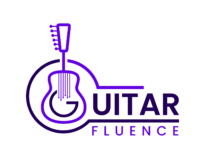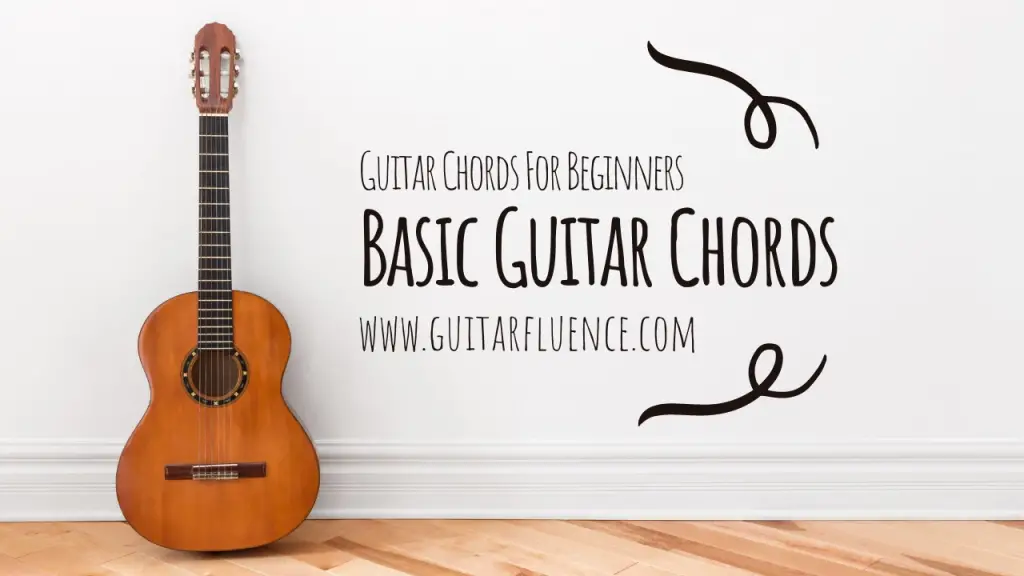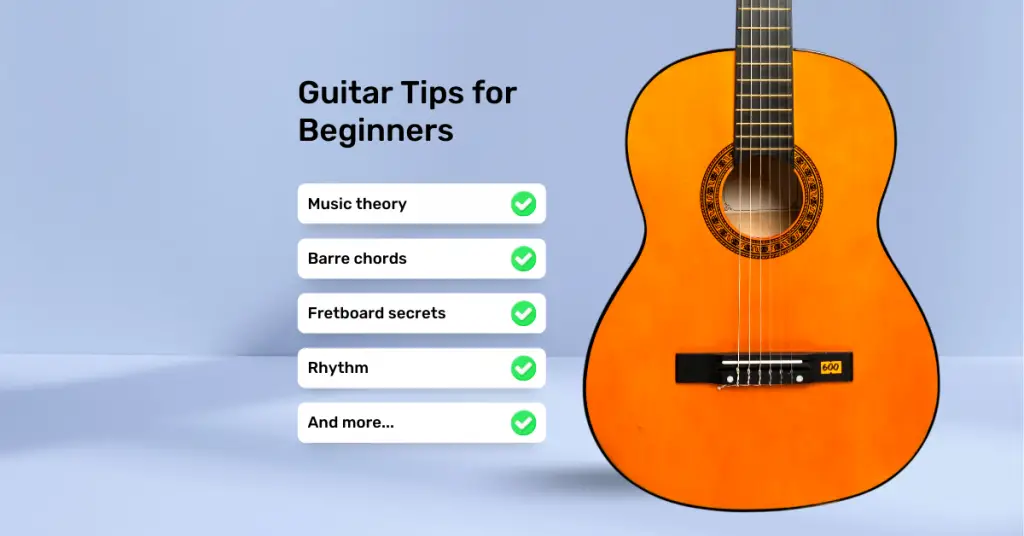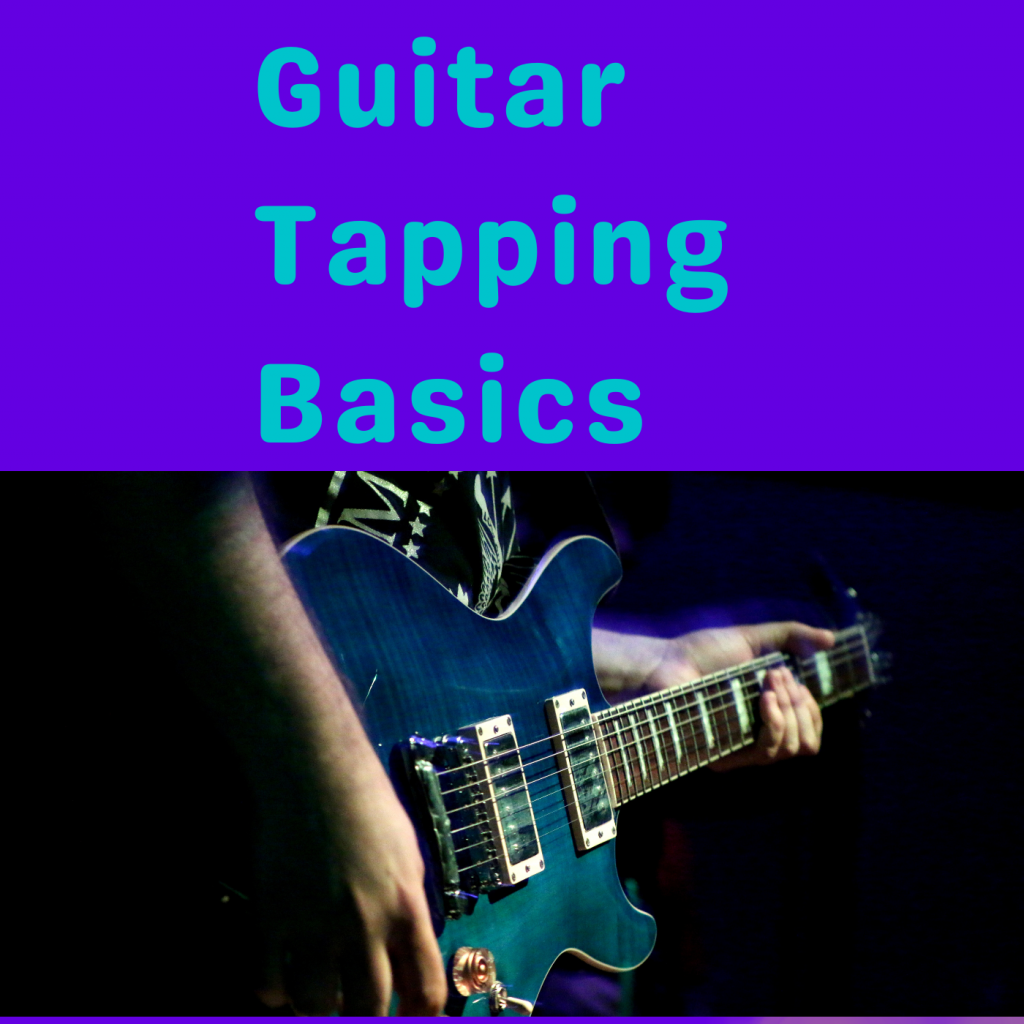Table of Contents
For those who are completely new to playing guitar, or considering picking it up for the first time, then learning guitar chords can seem a little overwhelming.
The good news is that they don’t have to be so hard…
I’m going to show you 15 basic guitar chords for beginners. These chords will allow you to play thousands of popular songs and help you sound like a pro.
Let’s jump right in.
1. C Major

C Major is not only one of the most used chords on the guitar, but one of the most used chords of all time. It is the first chord in the Key of C Major, making it very common.
The wide stretch between frets can be a little bit scary for beginners, but you will soon find that this chord will be your best friend!
2. A Major
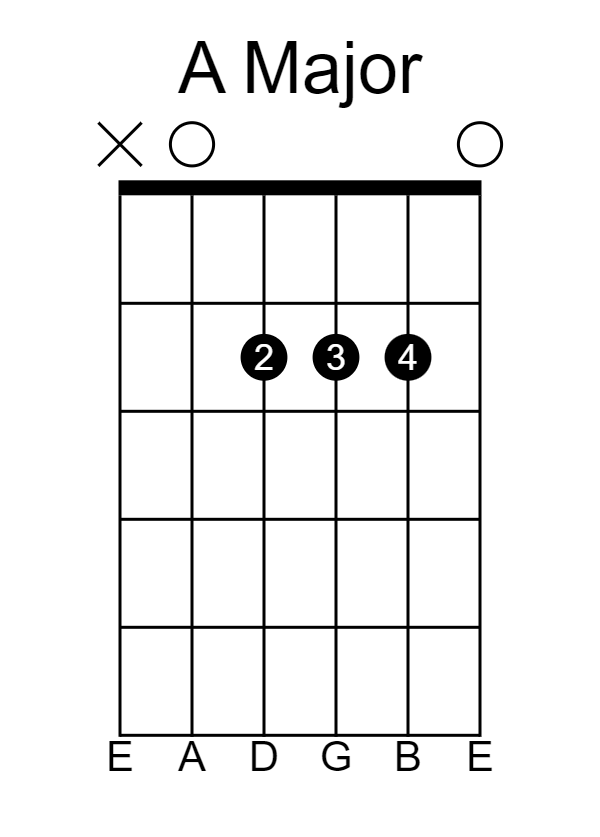
A Major can be played using the fingering shown in the chord chart, but you can also barre the chord if you wish.
A Major fits in well with D Major and E Major, and while it may be a common chord in acoustic folk music, you’d be surprised at how often this basic guitar chord is found in rock music.
3. G Major
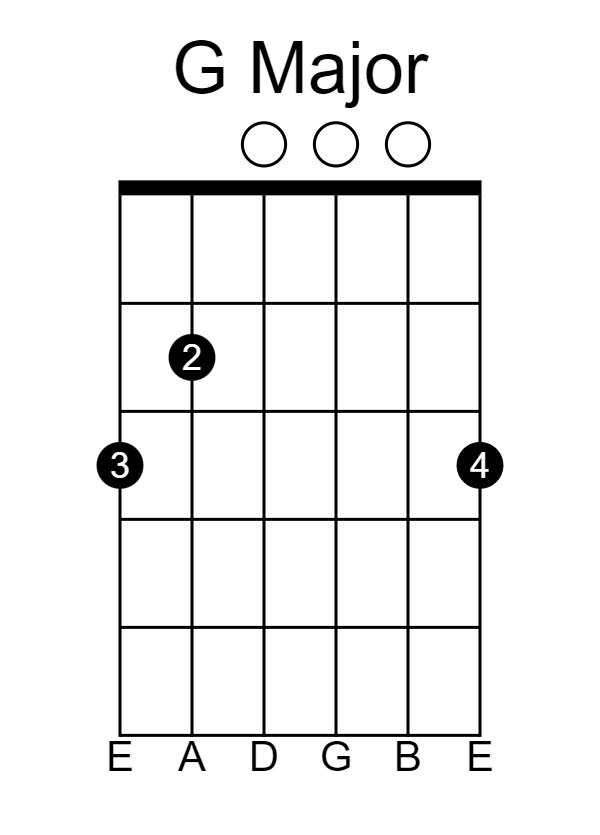
G Major is the guitar’s defining major chord. It goes well with E Minor, C Major, and D Major.
Using your pinky finger on the high E is important, as this will make the transitions from G to C much easier. It may be hard at first, but it will be worth it!
You may also play the G chord by playing the three open strings on the chord chart (D, G, and B).
4. E Major
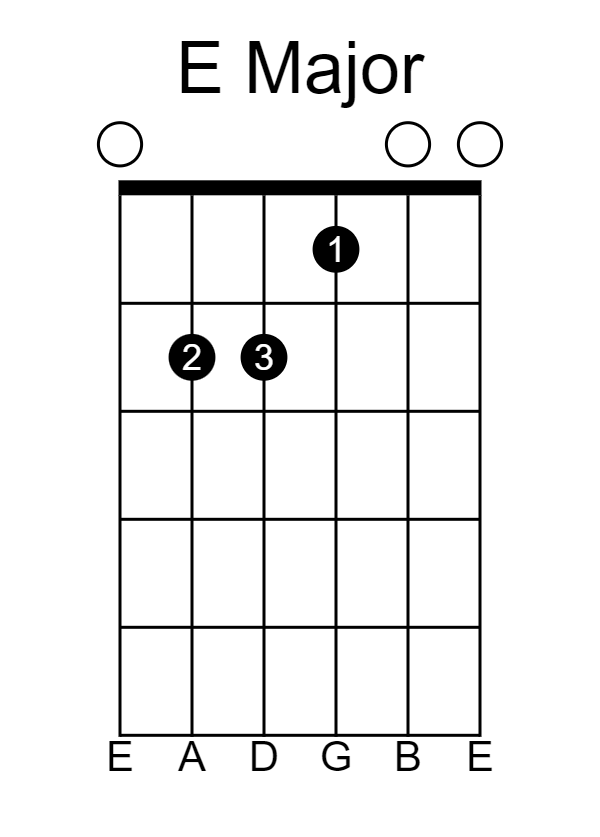
E Major is an awesome guitar chord, and for now you will mostly use it with A Major and D Major. This will probably be one of the easiest chord shapes for you.
When learning the difference between Major and Minor sounds, try switching between an E Major and E Minor shape. You can do this simply by removing your index finger from the chord. Understanding the difference between Major and Minor sounds will be important for your musical journey.
5. D Major
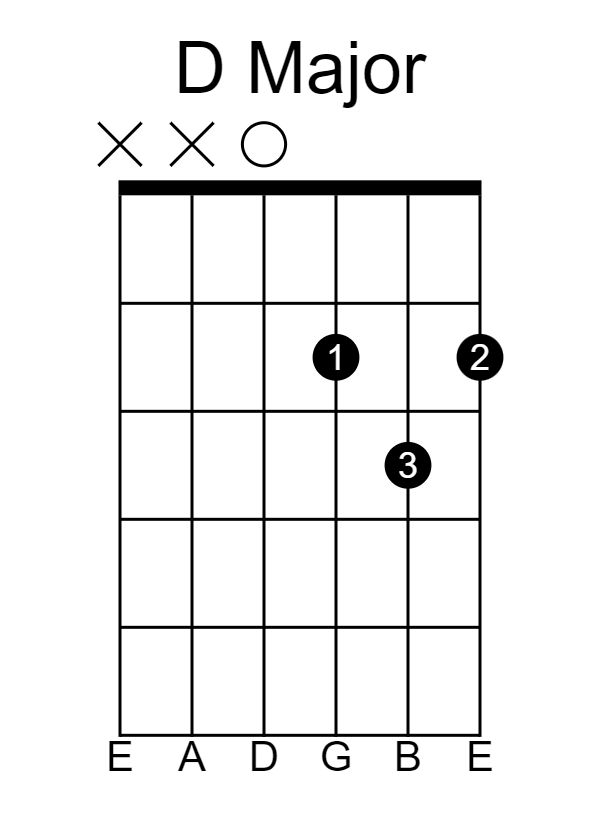
D Major is another easy chord to play and remember. It has a recognizable triangle/pyramid shape. Try playing this chord as shown in the chord chart, but also play it with an open high E string. You may like the sound!
D Major goes well with lots of basic chords. Some progressions I’d try are:
| Progression | Chords |
| G Major Progression | G Maj – C Maj- D Maj |
| D Major Progression | D Maj – G Maj – A Maj |
| A Major Progression | A Maj- D Maj – E Maj |
6. A Minor
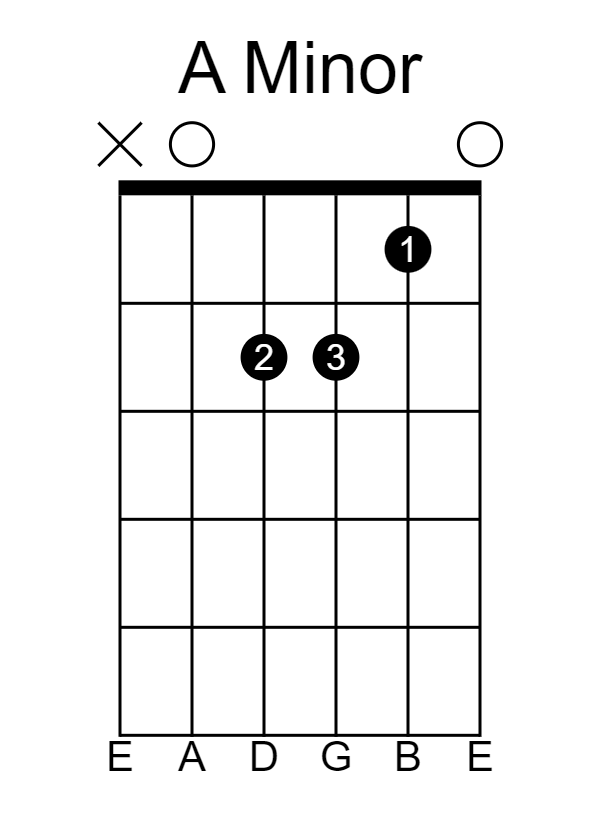
A Minor uses the same left-hand shape as E Major, but you move your fingers to the D, G, and B strings instead. You’ll often find this chord in a C Major Chord Progression, such as:
C Major – A Minor – D Minor – G Major
Also, work on practicing the transition from E Minor to A Minor. This is an important transition to get down, and it will allow you to practice two very important Minor chords.
7. D Minor

Everlast, is that you?
D Minor is commonly known as one of the saddest chords in music. It’s used in a ton of rock and metal songs but is also found often in outlaw country tunes. Some common songs that use D Minor on guitar are:
| Song | Artist |
| What it’s Like | Everlast |
| Another Brick in The Wall Pt. 2 | Pink Floyd |
| 21 Guns | Green Day |
Make sure to not play your A or Low E string when practicing the D Minor chord, and regularly work on transitioning from A Minor to D Minor, and D Minor to G Major.
8. E Minor

E Minor is probably the easiest guitar chord ever. When I say this I am referring to basic guitar chords commonly seen and used on the instrument.
The guitar’s standard tuning makes E Minor a popular chord to target, so you will find this song being used by everyone from Metallica to Taylor Swift.
9. F Major
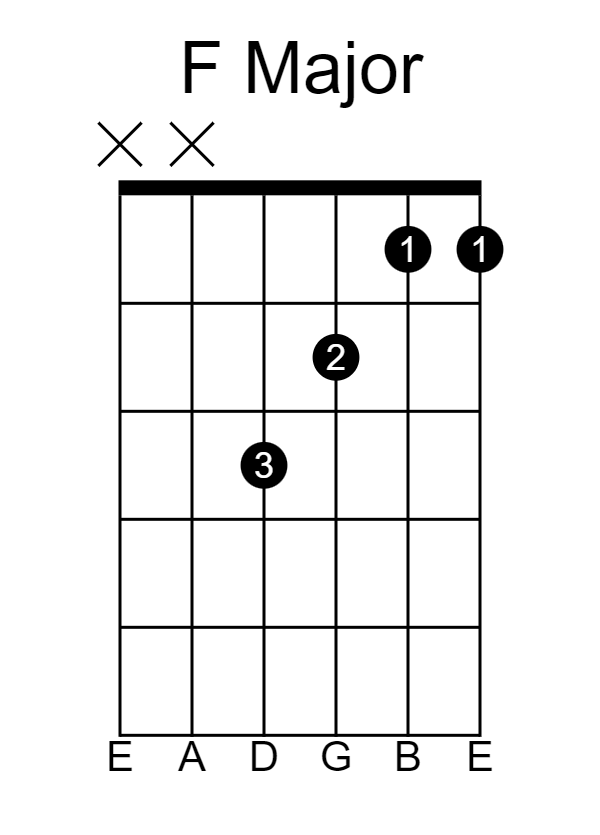
Playing F Major for the first time truly does suck. But fear not, the gods of barre chords will bless you with mighty left-hand strength if you practice.
In all seriousness, practice the bar by itself. Add your middle and ring fingers after you get the bar down. The whole chord will come far easier once you nail the bar by itself.
10. B Major
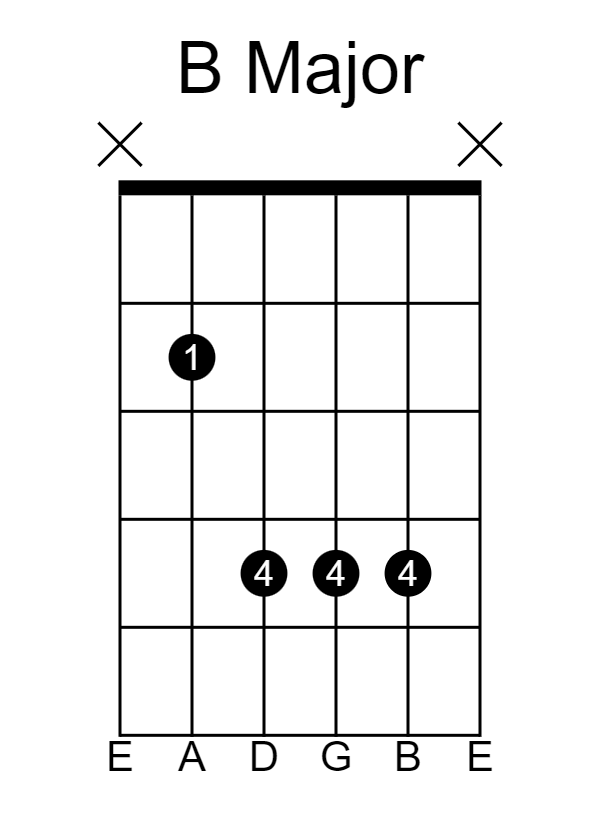
I had to include B Major because its bar shape is one of the most commonly used bar shapes on the guitar. Try moving the shape up and down in whole steps, and you will get different major chords.
You can look at it like A Major, but moved up a whole step. Just bar the fourth frets with your pinky, and let your index finger mute the high E string. Don’t think about the mute too much, as it will likely come naturally over time as you relax your left hand.
11. B Minor

Ever heard Kryptonite by 3 Doors Down? Well, this chord defines that song!
This is just like an A Minor chord, but you move the entire shape (including the open strings) up 2 frets (a whole step) each! This chord will often be used in an E Minor Chord Progression such as:
E Minor – A Minor – B Minor
This may be your first 4 finger bar chord, so practice it often, and make sure to play one string at a time to make sure each string sounds clear.
12. A7

A7 is just like an A Major chord, but it has an open G string! This is another easy chord, and it goes well with D Major. Try it out in this progression:
D Major – G Major – A7
One popular song you could try with A7 is “Twist and Shout” by The Beatles.
You can learn more about dominants 7th chords here.
13. D7

D7 is one of the first chords taught in most beginner guitar books. It’s a chord that is usually played with G Major and C Major. It can also act as a substitute for a D Major chord in a G Major chord progression, which would look like this:
G Major – C Major – D7
So if you’re getting tired of D Major, try replacing it with a D7!
14. E7

You’ll often find E7 being used in a blues or country song. It’s a common substitute for E Major, and it is even easier to play as well.
Here are two chord progressions with E7:
A7 – D7 – E7
E7 – A Major – B Major
Try out both of these progressions, and you will immediately see and hear traditional country or blues sounds.
15. G7

G7 is played similarly to a regular G Major chord, but you’ll use your index finger on the high E string instead of your pinky.
Because this chord uses the same left-hand fingering as a C major chord, it will be easy to transition between C Major and G7. Here’s a simple progression with G7:
C Major – A Minor – D Minor – G7
Basic Guitar Chords for Beginners Conclusion
These basic guitar chords for beginners are all that you need to start your guitar-playing journey.
Seriously, you can play 1000’s of songs with these 15 chords.
And keep in mind, it’s more important to practice often in the beginning guitar stage than to practice for long periods. Start by practicing the first eight chords on this list, then move on to practicing some of the chord progressions mentioned in the post!
If you liked what you read, then please consider sharing this with your friends, or on your personal blog!
And comment below if you have any questions.
